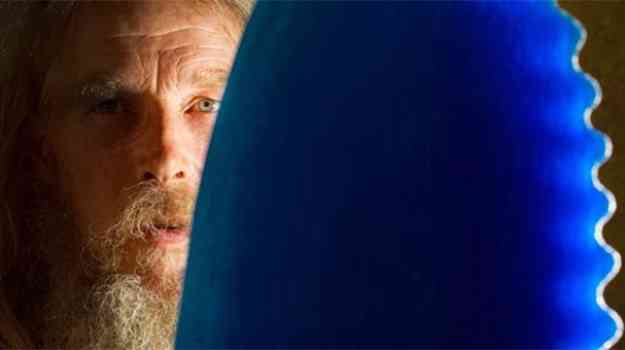3D Prints, Product Design
3D Printing Biomimicry Leads to Righteous Ripping
Where the soft calls of ocean mammals meet carefully extruded polycarbonate plastic, high-performing and beautiful surfboard fins are born. Boardshaper Roy Stuart has combined two things that will save the world: biomimicry and 3D printing.
[I wrote this blog for product design blog, Solidsmack. It’s re-posted here with permission.]
Most surfers these days ride with three fin, or ‘thruster,’ setups. Thruster fins offer a good balance of performance and stability. Some use two fins, which is less stable and more maneuverable and typically used only in small water. Beginners, long boarders, and folks that like retro equipment use single fin setups. Offering much greater stability, single fins also limit performance significantly. To get a sense of the difference between thruster and single-fin performance, imagine a ‘70s surf video of riders smoothly flowing along a wave, and then contrast that with modern surfers shredding the heck out of it. That difference is due, in part, to the better performance of thruster fins.
Roy Stuart’s Duke board is a beautiful $369,000 take on classic single-fin style boards.
From what I read on the internet, Roy Stuart’s focus is on the basic essence of surfing — catching waves. He likes to do it with large wooden boards that are elegantly crafted over long periods of time (years). To improve the performance of his single-finned masterpieces (as well as others’), Roy optimized the flow across the fin by adding a series of bumps, known as tubercles, to the leading edge of the fin. This forces water into faster currents which in turn increases performance. The use of leading edge tubercles (bumps) for improved performance is not new, Humpbacked whales have used them for millennia!
A humpback fin, photo taken by MrMoorey on Flickr.
Humans have long been inspired by nature, but in this day of pocket screens and wearable computers it’s easy to overlook the natural solutions that surround us every day. Despite this, there is a rapidly growing trend towards biomimicry — the use of the natural world as inspiration for solutions to human problems. Bio-inspired solutions often result in astounding efficiency gains, and fluid flow is a common application. If you’re interested in learning more about biomimicry, check out Ask Nature as well as Jay Harman’s recent book, The Shark’s Paintbrush.
Biologically inspired designs often require complex geometry that can be difficult to make with modern production methods. 3D printing offers a manufacturing technique that is similar to many of those found in nature — like a sea creature building a shell — and presents a new set of design constraints that encourages organic shapes and experimentation. For his fin, Roy considered a variety of manufacturing methods, but found them all either too difficult (machining a tall skinny thing causes deflection) or too expensive (tooling costs). He ended up partnering with a local design and 3D printing firm — Palmer Design and Manufacturing, for the development of the fin.
I contacted Palmer Design to get some information on the project, and was very pleased when Andrew Palmer responded with insight into their design process.
Yes, it is this easy. From Palmer Design and Manufacturing.
Palmer designed the fin in Solidworks, as you can see from the process shot, above. While Andrew declined to comment on their specific slicing software and printer setup, he did imply that they use a secondary piece of software that allows them to specifically control internal part geometry. By controlling infill geometry and using polycarbonate — a very strong printing material — the folks at Palmer were able to overcome their biggest challenge: fin strength.
The majority of the fin looks like it’s printed with rectilinear infill — often considered the strongest choice.
The fin is printed vertically with an FDM process. This build orientation means that as the fin flexes against it’s broad faces it is pulling the deposited layers apart. The bonding strength between layers is often the weakest link in a FDM part, but for part resolution and printing ease, it doesn’t make sense to print the fin in any other orientation. The strength Palmer has achieved here is impressive, and you can watch them break a fin.
Roy’s original fin, right, blows my mind with beauty. Picture from Roy’s website.
There are presently 17 versions of the fin. Picture from Roy’s website.
Each fin takes 2-6 hours to print. Using 3D printing, there’s no penalty to making a greater number of unique parts, and at present they have about 17 different versions. (3D printing will save the world.)
By combining his knowledge of surfing and board construction with biologically inspired aerodynamics and additive manufacturing techniques, Roy Stuart is now able to sell performance enhancing and affordable surfboard fins. For those of us that work in product design and manufacturing, biomimicry and 3D printing will continue to produce better products, more efficient processes, and game changing (anti-gravity) manufacturing methods. Considering the global problems we face, it’s important that we understand, embrace, and contribute to these changes.
Title photo of Roy Stuart by Alan Gibson from the New Zealand Herald, copied from Matrix Surfboards.

